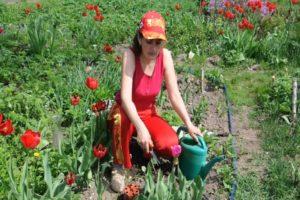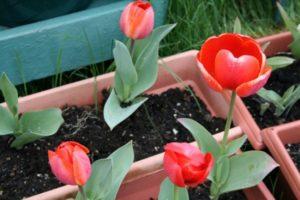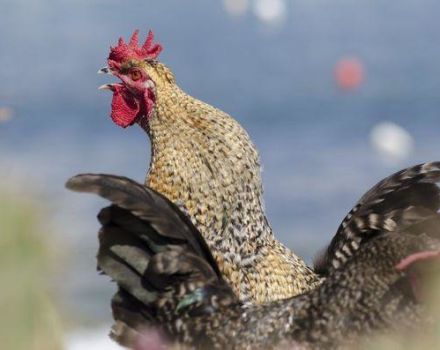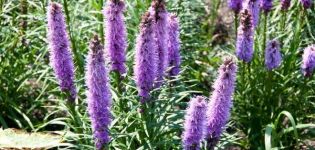Planting and caring for bush tulips, features of agricultural technology for different varieties
To receive from a tulip not a lonely flower, but a whole bouquet is an old dream of breeders. It cannot be considered fully realized - few succeed in getting many flowers from the bulb in the second year. Consider the features of planting and caring for bush tulips, what rules must be followed so that the plant blooms with a lush bouquet and does not degenerate.
Features of growing multi-flowered tulips
Multiflower tulip bulbs are easy to obtain, but these plants are not easy to grow. To get planting material, which next year will again give several flowers, and grow a lush bush from it, only hardworking neat flower growers can do.
What conditions will help grow bush tulips:
- selection of high-quality planting material - the first analysis and "extra", bulbs - at least 4 centimeters;
- regular watering;
- top dressing 3 times per season;
- digging out annually - for the hot period, the bulbs are removed from the ground.
Often only the flower from the apical bud has good external data, the rest lag behind it in terms of flowering and are inferior in size and brightness.
Tip: it is better to plant bush tulips in groups, so they look more spectacular and expressive.
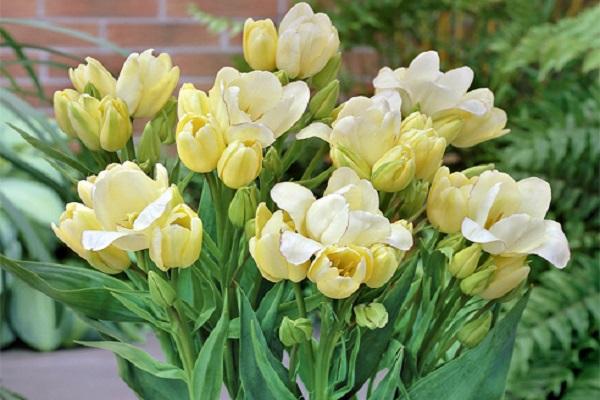
Class varieties
Work on breeding tulips with a large number of flowers began in the 40s of the 20th century. Today, about 3 dozen bush varieties are known.
Antoinette
The variety belongs to chameleons. Flowers bloom pale yellow, with a white edging, which gradually turns pink. On a plant - up to 4-6 flowers. The height of the bush is 45 centimeters.
Like most tulips, they bloom in May. They easily endure the vagaries of spring weather - wind and lack of sun.
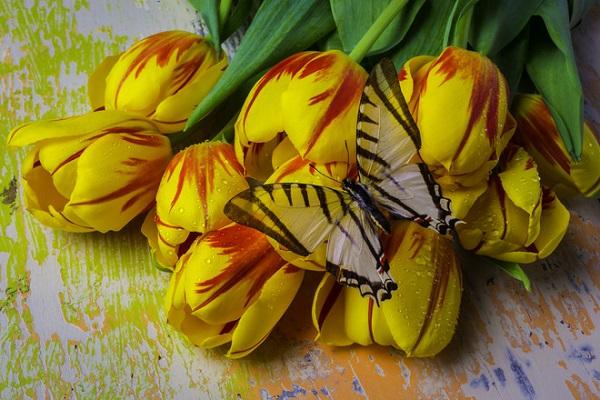
Candy Kisses
Gives magnificent flowers of the most delicate color - pink with a peach tint around the edge. The number of buds is 3-6. Can be grown as a pot culture if desired. Blooming - early May.
Quebec
A low variety (30-35 centimeters), which will well decorate the edge of the flower bed with early flowering. On the bush there are 3 orange-colored flowers with a yellow border.
Rosie Bouquet
This plant really blooms with a bouquet - beautiful multi-petal flowers have a creamy color and an intricate pink border around the edge. Produces up to 6 colors. Height - 50-55 centimeters.

Belisia
April chooses Belicia for blooming.The flowers are lush, with yellowish-white petals, along the edge of which there is a scarlet-purple stripe. Decorative large flowers on stems up to 50 centimeters.
Fringid Family
The Fringed Family bush tulip is rightfully considered one of the most beautiful among its fellows - the flowers are bright and delicate at the same time. A delicate white carved border surrounds mauve petals. Bouquet - 5-7 flowers. Bloom - April-May.
Wallflower
Exquisite long (up to 8 centimeters) tulips of dark burgundy color. The plant produces 5 buds that look together like a real bouquet. Wallflower blooms for a long time - 10-15 days.
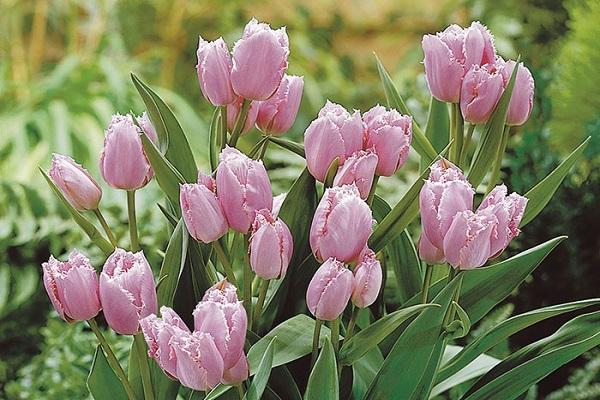
Orange Bouquet
The bouquet variety gives the buds of a pronounced orange hue. The inner part of the flower is pink. Orange Bouquet is good on flower beds, they decorate the site. Blooms in April-May with 3-5 buds.
Fleming Club
Bright, variegated flowers of a white and pink hue give this bushy look. The stripes along the petals give the tulip a festive look. With good care and planting material, the number of flowers is up to 11. Suitable for bouquets and flower bed decoration.
Knight Club
Very beautiful one-color tulips of pronounced lilac-pink color. Look good next to solid white or yellow tulips. Night Club gives up to 7 flowers, good in a bouquet and in a flower bed. Blooms in May.
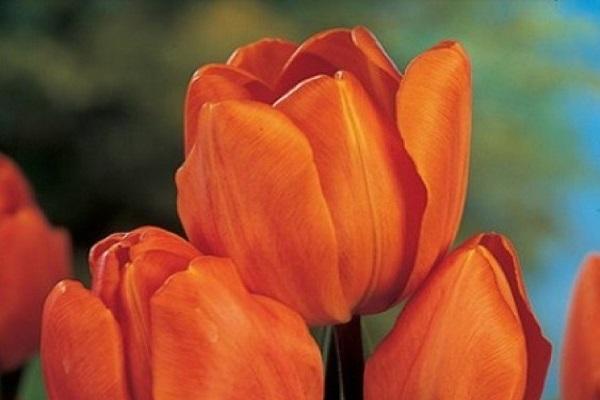
Gypsy Love
The exquisite purplish red shade and fringe around the edges of the petals are the main features of Gipsy Love. The flowers are large - up to 10 centimeters. Despite the long flowering (up to 3 weeks), they keep their shape well - they do not open, do not lose color. Persistent, like real gypsies, Gipsy Love - "gypsy love".
Red Georgette
Bright flowers of pomegranate color, up to 7 centimeters tall. The long stem (50-60 centimeters) allows you to beautifully collect them in a bouquet. Red Georgette produces up to 5 flowers, which are convenient for planting in flower beds with other one-color tulips.

Landing features
Shrub tulips need good grooming, which starts with proper planting. The soil should be loose, absorb moisture well and not harden with a crust.
When to plant tulips
The usual planting date is September, but growers recommend that you focus on the weather. To prevent the plant from growing, the soil temperature should not be higher than 10-12 °.
Important: during spring planting, the bulbs begin to grow in a pot, and they are transferred to the soil when it warms up to 15 °. In this case, you should not count on full flowering.
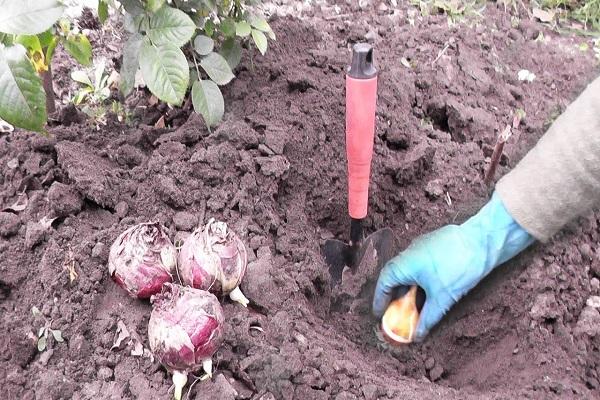
Preparing the bulbs
The purchased planting material does not require preparation. Own bulbs are sorted, questionable ones are discarded, peeling skin is removed. Before planting, they are dipped in a potassium permanganate solution for 20-30 minutes and dried.
After flowering
If the tulip is not cut, after flowering, the remnants of the ovary are carefully removed, leaving the stem. They wait for the green part of the plant to dry, after which the bulbs are dug up. This is done with bush tulips every year. The bulbs are sorted, sorted, dried for about a week.
For a month, the bulbs are stored at temperatures above 30 °, then transferred to rooms with a lower temperature (20-22 °). At the time of planting, the bulbs should be stored at temperatures close to 15 °.
Seat selection
Tulips grow well in sunny and slightly shaded places, which are illuminated by direct rays for part of the day. The site should be well protected from the wind, but dry, without long standing puddles.
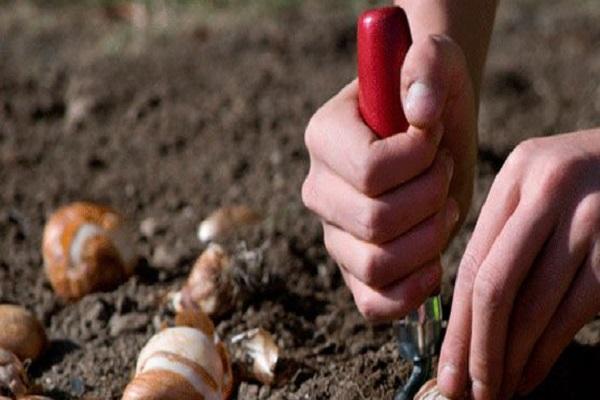
All bulbs love light soils, and bush tulips are in dire need of them. Before planting, they dig up the earth by 30-35 centimeters, loosen it well, free it from roots and weeds. Drainage is laid, organic fertilizers and sand are applied. Fertilize with organic matter 2-3 weeks before planting the bulbs.
Landing scheme
When planting multi-flowered tulips, the following rules are followed:
- the distance between the bulbs is 10-15 centimeters;
- the distance between the rows is 20-25 centimeters;
- depth - 10-12 centimeters, for small bulbs - 5-8.
In winter, the site should be mulched with peat to protect it from freezing.
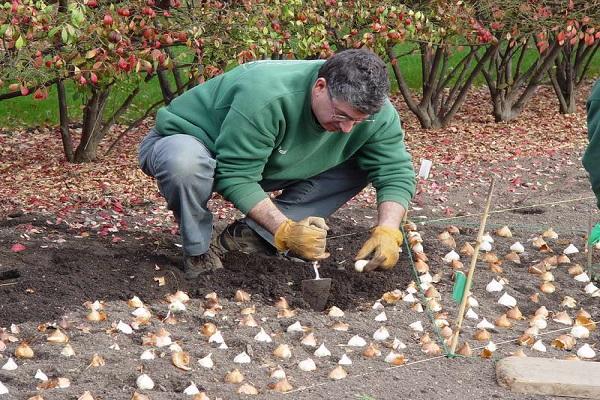
Basic rules for care
Only careful maintenance will allow the plant to throw out a few buds and bring them to flowering.
Watering and fertilizing
Shrub beauties, unlike lonely relatives, need constant moisture. Lack of moisture is one of the reasons why they do not reproduce many colors in the second year. The bulbs do not have enough energy to forcing and preserving the buds. The earthen ball must be stably moist.
Top dressing three times per season is another condition for ejection of buds and flowering. How is it done:
- for outgoing snow - mineral fertilizers - 40 grams per square meter;
- when buds appear - before watering in the same amount;
- at the beginning of flowering - a tablespoon of potassium dihydrogen phosphate in a bucket of water (3-4 liters per square meter).
To get the number of flowers promised by breeders, you cannot do without feeding.
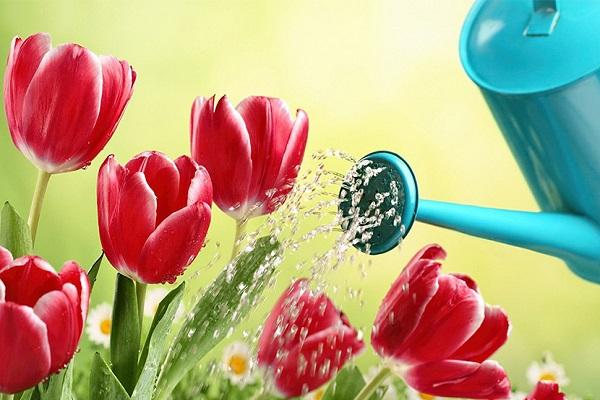
Loosening the soil
The bulbs need good drainage and oxygen supply. Loosen the soil around the tulips after each rain and watering, avoiding crust formation. They are provided with comfort and care for the bulbs to master the formation and growth of large numbers of buds.
Weeding tulips
The foliage of tulips is not abundant, the weeds clog it. Weeds are removed immediately after emergence during loosening. Otherwise, the weeds will draw moisture and nutrients away from the bulb. It is better not to use chemicals against weeds, mechanical loosening is enough.
Transplanting tulips
The bulbs are dug up annually, making sure to provide the recommended conditions outside the soil.
Multiflorous tulips are transplanted to another place after 2-3 years.
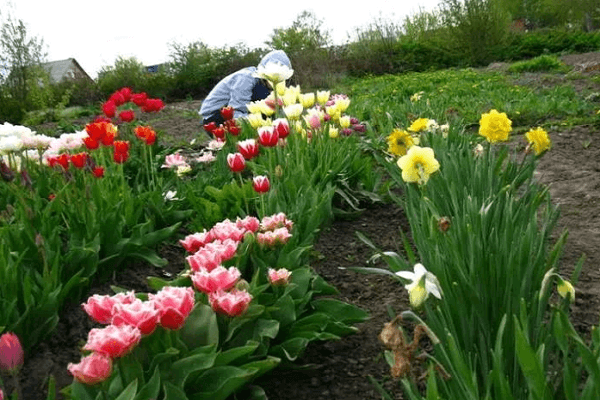
Propagation of tulips
When tulips are propagated, daughter bulbs are used that form on the main one. To propagate bush tulips on your own and get a multi-flowered plant is an overwhelming task for a simple grower.
Diseases and pests of tulips
Excess moisture, poor soil drainage, pests can cause damage to bulbs, roots and green parts of plants.
The most common and dangerous diseases are different types of rot - fusarium, gray, botrytosis, white. These fungal infections affect the bulbs and roots and spread to the leaves and buds. The disease emerges from contaminated soil and bulbs.
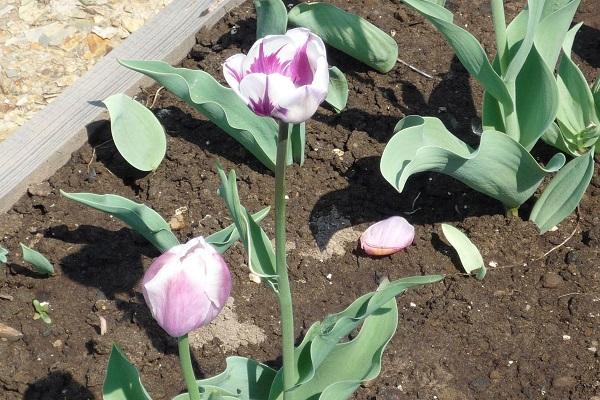
Sick plants need to be isolated and destroyed, the soil must be treated with fungicides and not used for up to 5 years.
Other types of diseases:
- aphid;
- rodents;
- bear;
- slugs;
- purple scoop.
To avoid pests, plants are inspected and treated against insecticide infestation.
The bulbs are stored in well-ventilated rooms with a humidity of up to 60%, since the planting material often becomes sick if stored improperly.
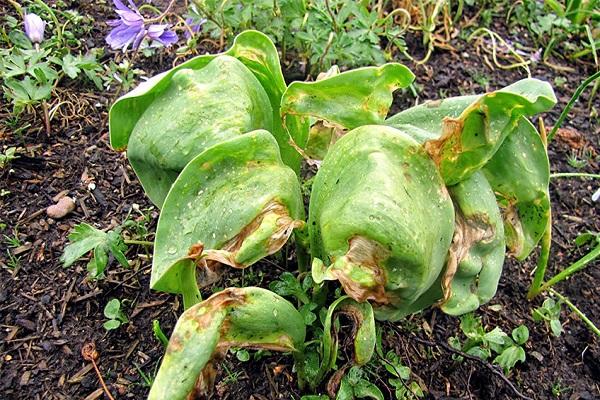
Growing problems
Bush varieties are difficult to grow. The main sadness of amateur flower growers is that it is not often possible to reproduce repeated flowering with a large bouquet of their own bulbs. Breeders are interested in the annual sale of seed, and do not bother to consolidate the properties of long-term multi-flowering.
But good store-bought bulbs will bloom in several buds only with proper care. You can't plant a tulip and just wait. Let us recall the necessary points of care:
- well-drained light soil;
- timely watering, constant soil moisture;
- loosening, easy access of air to the roots without overdrying;
- triple feeding.

If the summer resident wants to get flowers from his own bulbs next year, you need to follow all the rules for harvesting, storing and planting them.
Bush tulips look good in flower beds, but are inferior in beauty to single brethren in cutting.To get a full-fledged bouquet, they need to be planted in the winter, carefully observing all growing conditions. Early flowering, beautiful greenery and a magnificent multi-flowered bush will truly decorate the site.
